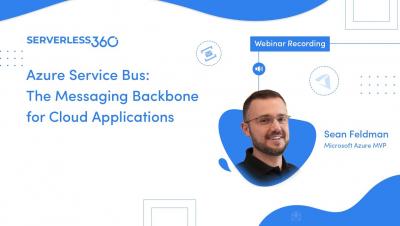Operations | Monitoring | ITSM | DevOps | Cloud
Serverless
The latest News and Information on Serverless Monitoring, Management, Development and related cloud technologies.
August Monthly Roundup
Here is a quick round up of the newest product features, resources, and events!
Challenges and Opportunities of Going Serverless in 2021
While we know the many benefits of going serverless – reduced costs via pay-per-use pricing models, less operational burden/overhead, instant scalability, increased automation – the challenges of going serverless are often not addressed as comprehensively. The understandable concerns over migrating can stop any architectural decisions and actions being made for fear of getting it wrong and not having the right resources.
Best practices for collecting and managing serverless logs with Datadog
Logs are an essential part of an effective monitoring strategy, as they provide granular information about activity that occurs anywhere in your system. In serverless environments, however, you have no access to the infrastructure that supports your applications, so you must rely entirely on logs from individual AWS services when troubleshooting performance issues.
Securing Serverless Applications with Critical Logging
We’ve seen time and again how serverless architecture can benefit your application; graceful scaling, cost efficiency, and a fast production time are just some of the things you think of when talking about serverless. But what about serverless security? What do I need to do to ensure my application is not prone to attacks? One of the many companies that do serverless security, Protego, came up with an analogy I really like.
Zero effort performance insights for popular serverless offerings
Inevitably, in the lifetime of a service or application, developers, DevOps, and SREs will need to investigate the cause of latency. Usually you will start by determining whether it is the application or the underlying infrastructure causing the latency. You have to look for signals that indicate the performance of those resources when the issue occured.
How to Monitor Serverless Apps
Simplifying App Deployments for Developers - A Short History from Timesharing to Serverless
Serverless with AWS - Image resize on-the-fly with Lambda and S3
Handling large images has always been a pain in my side since I started writing code. Lately, it has started to have a huge impact on page speed and SEO ranking. If your website has poorly optimized images it won’t score well on Google Lighthouse. If it doesn’t score well, it won’t be on the first page of Google. That sucks.
How to Test JavaScript Lambda Functions?
Function as a service (FaaS) offerings like AWS Lambda are a blessing for software development. They remove many of the issues that come with the setup and maintenance of backend infrastructure. With much of the upfront work taken out of the process, they also lower the barrier to start a new service and encourage modularization and encapsulation of software systems. Testing distributed systems and serverless cloud infrastructures.











